Westone Mach 60 IEMs – Triple Plan – Bass, Mids, and Treble
Westone Mach 60 are a pair of IEMs priced at 1100 USD, currently found on sale for 879 USD, with 6 Balanced Armature Drivers, and a unique sound to match the super ergonomic design. They will be compared to other high-end and flagship IEMs, including Ambient Acoustics MAD16 (2500 USD), Oriveti OV800 (999 USD), Unique Melody MEXT (1200 USD), Fir Audio VxV (999 USD), and Campfire Ara (1300 USD).
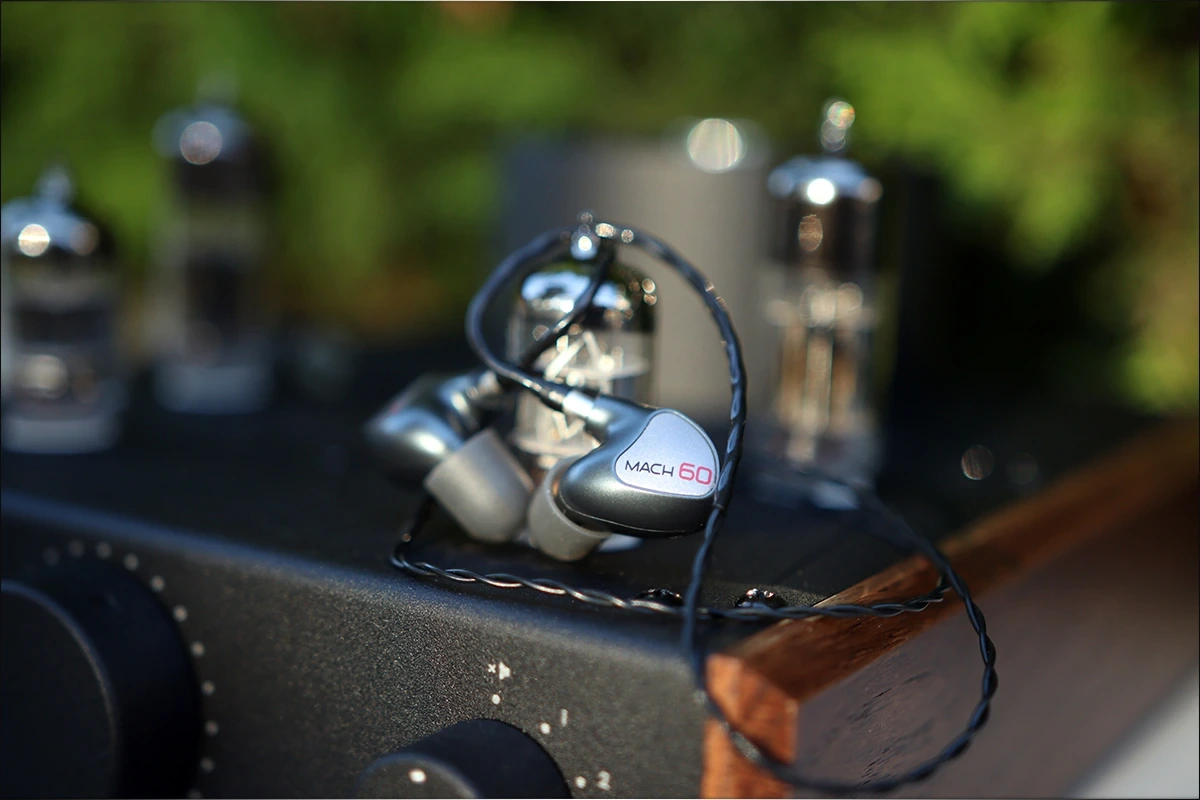
Introduction
Westone is still on a roll with the IEMs they’ve released and today we explore MACH 60, the 1100 USD, high-end IEM based on 6 Balanced Armature drivers. With most companies, the more you increase the number of drivers, the more matching, testing and keeping in line it takes for them to play well together, and I’m happy to say that Westone is super responsible with how they make and design those, so you’re sure to always get a high-end IEM with outstanding performance when ordering from Westone. They also made sure you can easily purchase their IEMS easily, so they’re available in local music shops, as well as Amazon and other outlets. As I earn a little tip from qualifying purchases, if my review helps you out, please consider getting your unit using the links included in the review. The whole MACH series combines over 35 years of engineering and design to get listeners and artists the best sound both on and off the stage.
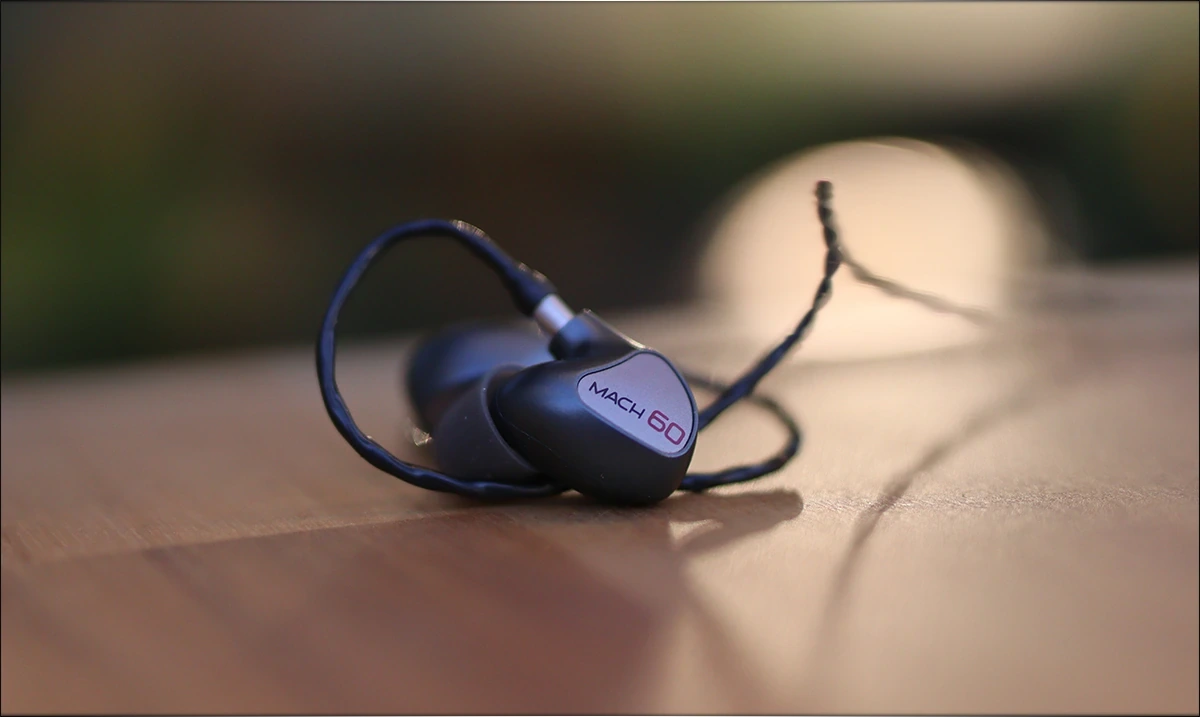
It should be noted that I have absolutely no affiliation with Westone Audio, I am not receiving any incentive for this review or to sweeten things out. I’d like to thank Westone Audio for providing the sample for this review. Every opinion expressed is mine and I stand by it. The purpose of this review is to help those interested in Westone MACH 60 IEMs find their next music companion.
Product Link
You can grab one from www.amazon.com here: https://amzn.to/3TreBDA
If you’re in the UK, you can grab one from www.amazon.co.uk here: https://amzn.to/3TlCnkD
And if you’re from Europe, you can grab one from www.amazon.de here: https://amzn.to/3T348OV
Build Quality/Aesthetics/Fit/Comfort
The outer parts, build quality and comfort are really similar to what we’ve seen in MACH 40, and if it wasn’t written on them, you probably wouldn’t know which is which. This is a really good thing because with most high-end IEMS, when you increase the number of drivers you need to increase the size, and with Westone the comfort is already a very important aspect of the listening experience.
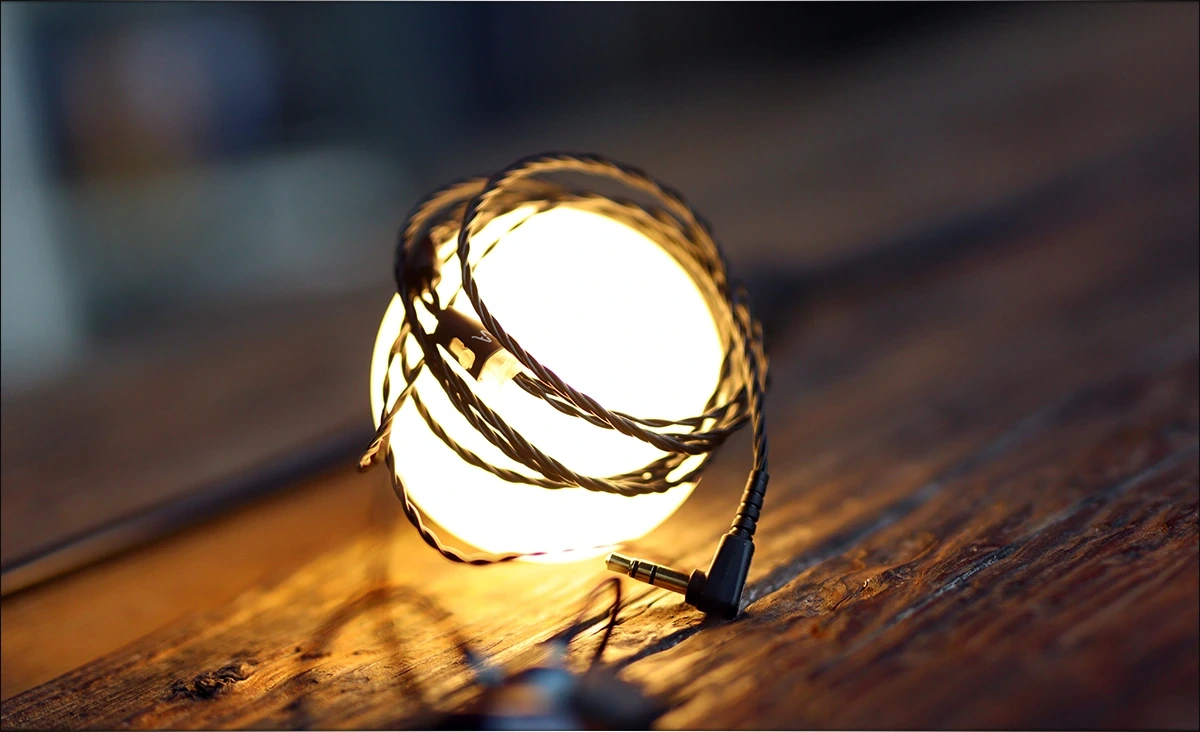
MACH 60 uses a premium Estron SuperBaX Cable, with a low 0.75 OHMs of resistance, which is lightweight and incognito in design. The cable has a T2 connector which is less usual than the 2-Pin and MMCX connectors we typically see for IEMs, but most aftermarket companies are able to make their cables with T2 connectors.
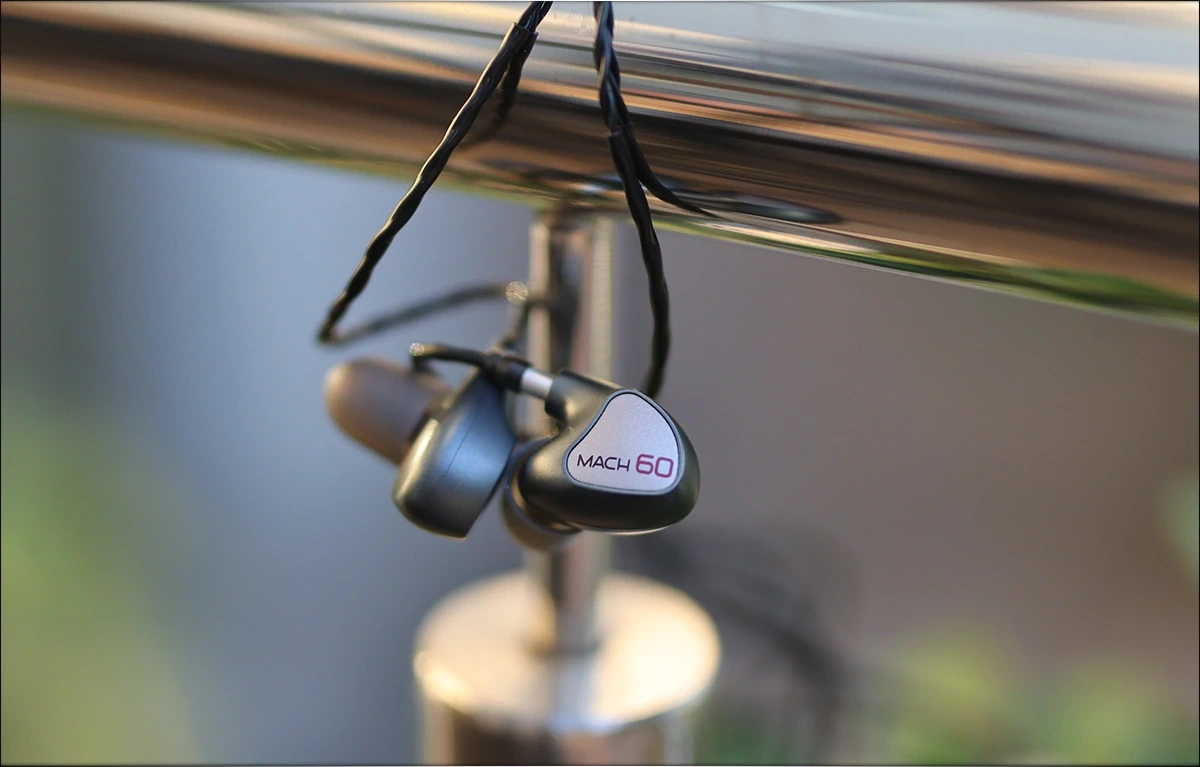
The technical information on MACH 60 is actually simple to digest, as they have a typical impedance of 35 OHMs, high enough to avoid hissing from most sources, but low enough for MACH 60 to be easily drivable from most portable sources, including Bluetooth and wireless transmitters you’d typically use on stage. That being said, the sensitivity of 100 dB is on the slightly lower side compared to most IEMs, so you’ll have to crank the volume a bit, but in my subjective experience they need about as much volume as most full-sized headphones. To give you some idea, Fir Audio NE4 needs between 10 and 15 / 63 on iBasso DX320, while MACH 60 needs 40-45 / 63 to get to the same volume. This being said, Fir Audio NE4 is connected to the balanced output, while MACH 60 to the Single Ended port as I don’t have T2 Balanced Cables.
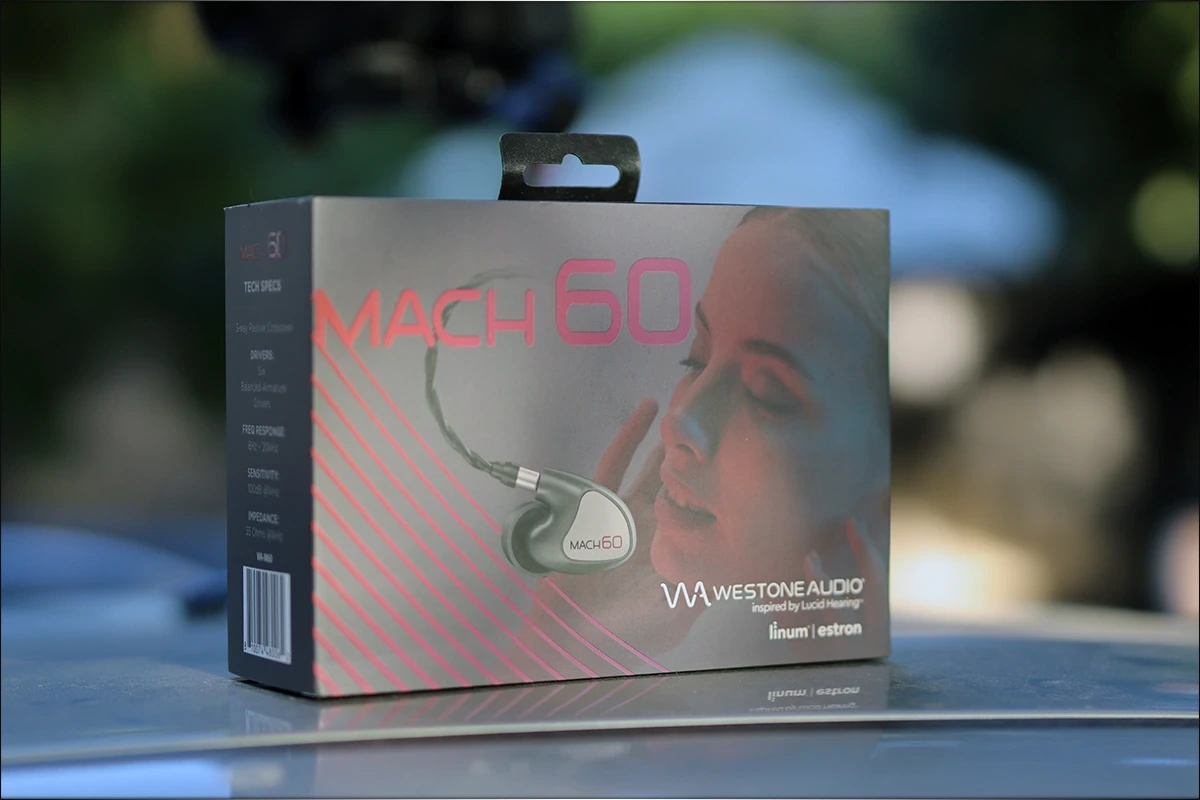
All of the music coming from MACH 60 is produced by six Balanced Armature Drivers, with a 3-Way Passive Crossover, and they have a noted Frequency Response of 8Hz – 20kHz. While the company doesn’t try to impose themselves with technical data you won’t hear, I can say that the subjective experience wearing MACH 60 is a pleasing one. At least since I already had time to experiment with MACH 40, which I reviewed a few days ago, I know what tip size I need and how to properly fit them. At first wear, this whole operation can take a while, so don’t worry if you’re not getting perfect comfort from the first second wearing them, with Westone you are supposed to tip roll.
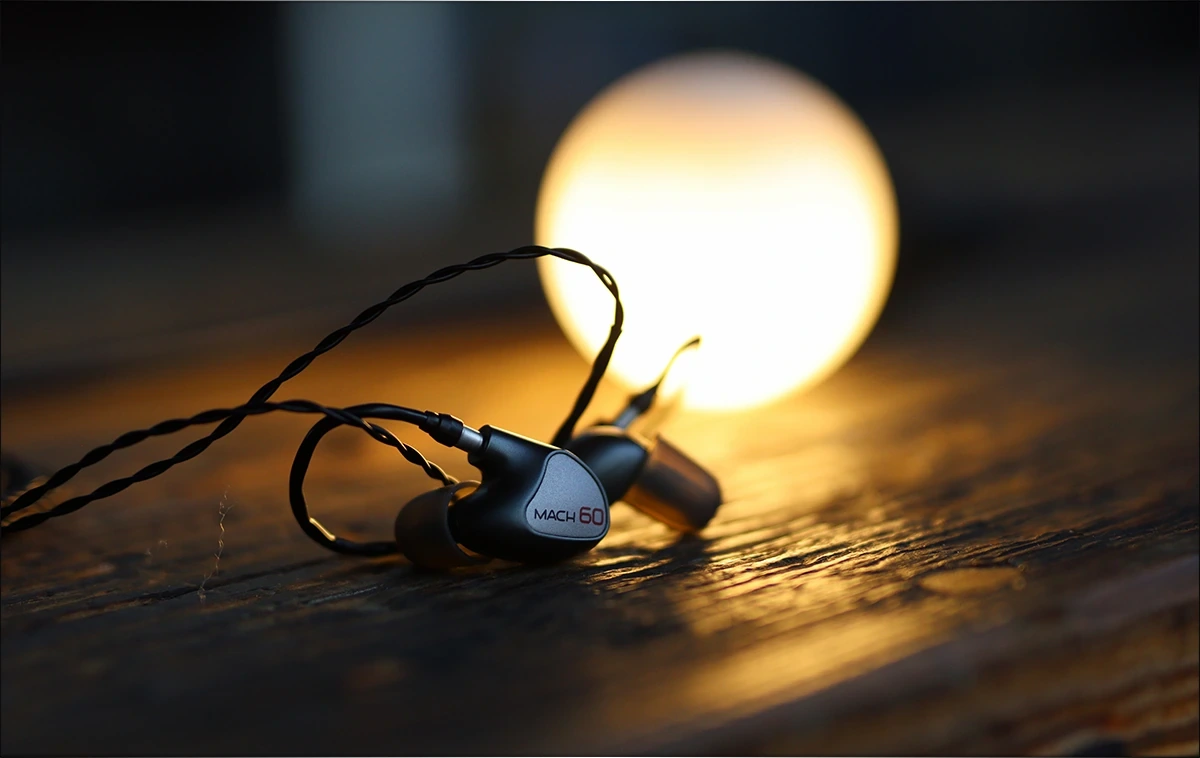
As with most Deep-Fitting IEMs, they leak extremely little (someone can sleep in the room while you’re blasting metal at 110dB in your ears), and they isolate extremely well from the outside noise, so much so that you’re not likely to notice a car honking you a meter away, so please be careful if you’re wearing those outside. MACH 60 responds quite well to source matching, so it will be important to use a better source, but they have a signature that works well for basically any signature, including wireless receivers you typically use on stage.
Sound Quality
The source list for MACH 60 includes DAPs such as iBasso DX320 and Lotoo PAW6000. Since this is a single ended only IEM, I took out DTR1+ from Dethonray, especially as it has a magically thick and deep sound and got SG1 Pegasus from the company too for testing. As MACH 60 needs a pretty high volume to sound good, I drove it using HIFIMAN EF400 as well, and also Lotoo PAW s2, TempoTec V6, and even some entry-level sources such as Surfans F20 and Aune X1s GT. Generally speaking, MACH 60 responds averagely to source changes; it can be driven from an entry-level source but using a better source result in a deeper and wider soundstage, better resolution, and better instrument separation.
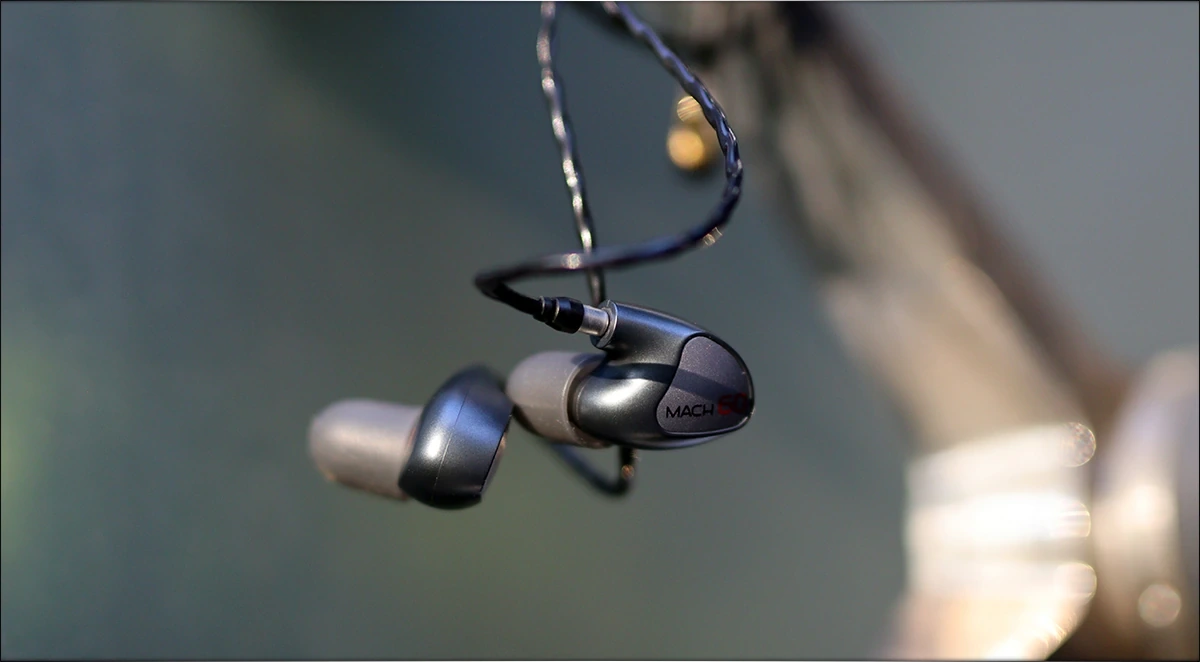
The overall signature of MACH 60 is deep, thick and has surprisingly good instrument separation, it is an IEM that presents music in a relaxing manner, with good resolution and a relaxing presentation. I like it for rock, metal, EDM, pop and punk. The signature is actually great for monitoring voices in general, but it presents instruments like trumpets with less aggressiveness than most IEMs, so MACH 60 makes it easy to enjoy aggressive and poorly mastered music, being a good artistic instrument too.
The bass of MACH 60 has a fairly good extension, with good impact. The bass seems to have a slight roll off in the absolute lowest part of the bass, but that’s very dependent on how good the tips you’re using fit you. Since I got the best comfort with MACH 60 using the red long tips, I found that with those the bass isn’t quite as deep as I would like, but with other tips, it is complete, so it is really important to get a proper seal and fit if you want to judge the bass properly. Unfortunately, I can’t really enjoy the other tips as much as they cause a slight discomfort after a while, this is why I’m taking this signature as the baseline. The bass has good substance and a bit of extra weight and thickness in the upper bass and lower midrange, which adds to the signature of MACH 60.
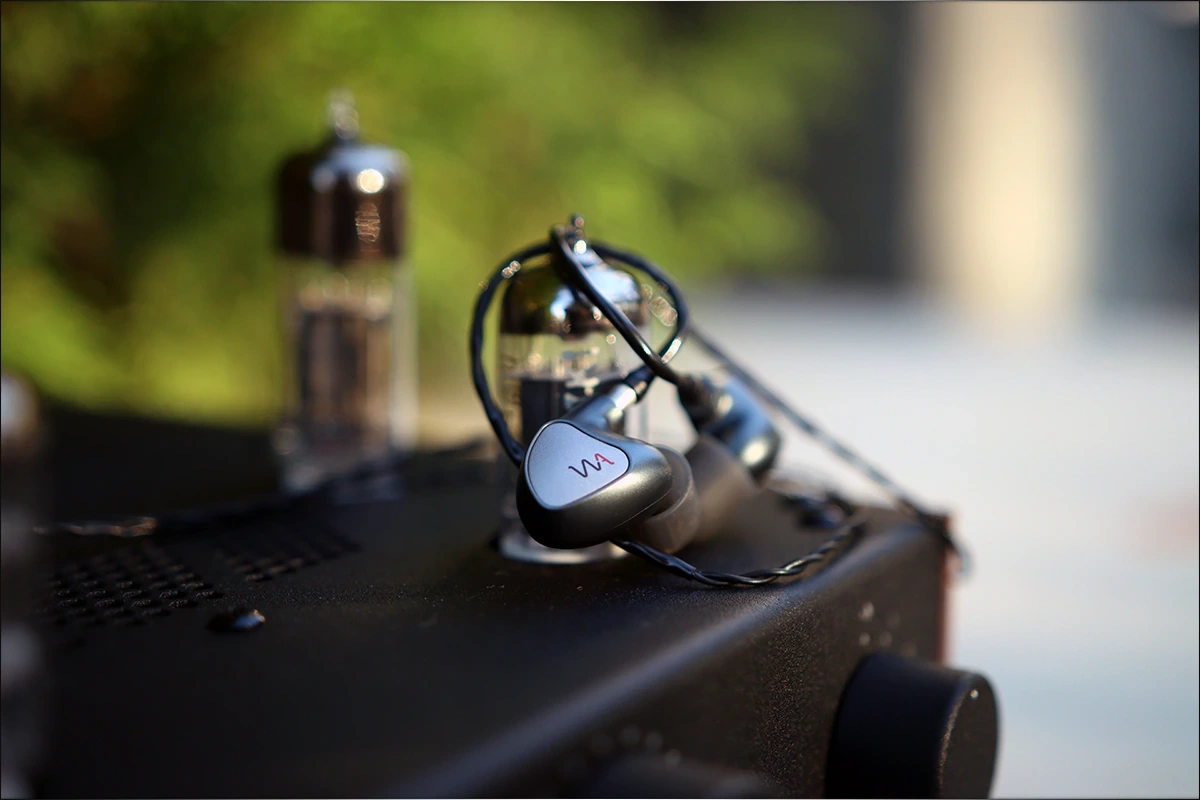
If the signature starts from the lower midrange, MACH 60 doesn’t have a super strong emphasis on male voices, having a good presentation for both male and female voices, but the upper midrange is attenuated a bit, and this is audible in songs that would sound shouty or harsh, as MACH 60 is absolutely free of harshness and fatigue. There’s a superb sense of instrument separation and space, and MACH 60 has a unique way of conveying music with a black background, so you never struggle to hear an instrument, everything makes sense, and plays in its own space. MACH 60 also separates voices from the background instruments from the lead instruments well, offering a very complete and studio-like picture of the song you’re currently listening to.
The treble of MACH 60 is smooth, clean and has a good amount of air, without ever being fatiguing. If anything, I’d say that the midrange was the focus of the MACH 60 sonic presentation, as the treble manages to be present and add crispness and air / detail to the sound, but it never gets overbearing, even if the song was quite aggressive. Rap music in particular sounds sublime with MACH 60, but so does pop, and female voices have the right amount of emotion to be pleasing and enjoyable. Pianos are surprisingly correct in tonality and vivid in expression when played by MACH 60, and for what I thought would be a specialist IEM, they ended up being a superb all-rounder for me, as I find myself enjoying them with most of my music, from rock to really hard and heavy rock to grind core, but also to classical, cabaret and light pop. As a bonus I want to mention that the fit style and cable style make them in such a way that even with just modest sonic levels you can easily sing while wearing MACH 60 and they mix just the right amount of your voice with the music to emulate a high quality custom IEM, so they’re fully ready to be used on stage if you don’t want to get customs but still want that level of isolation and comfort.
Comparisons
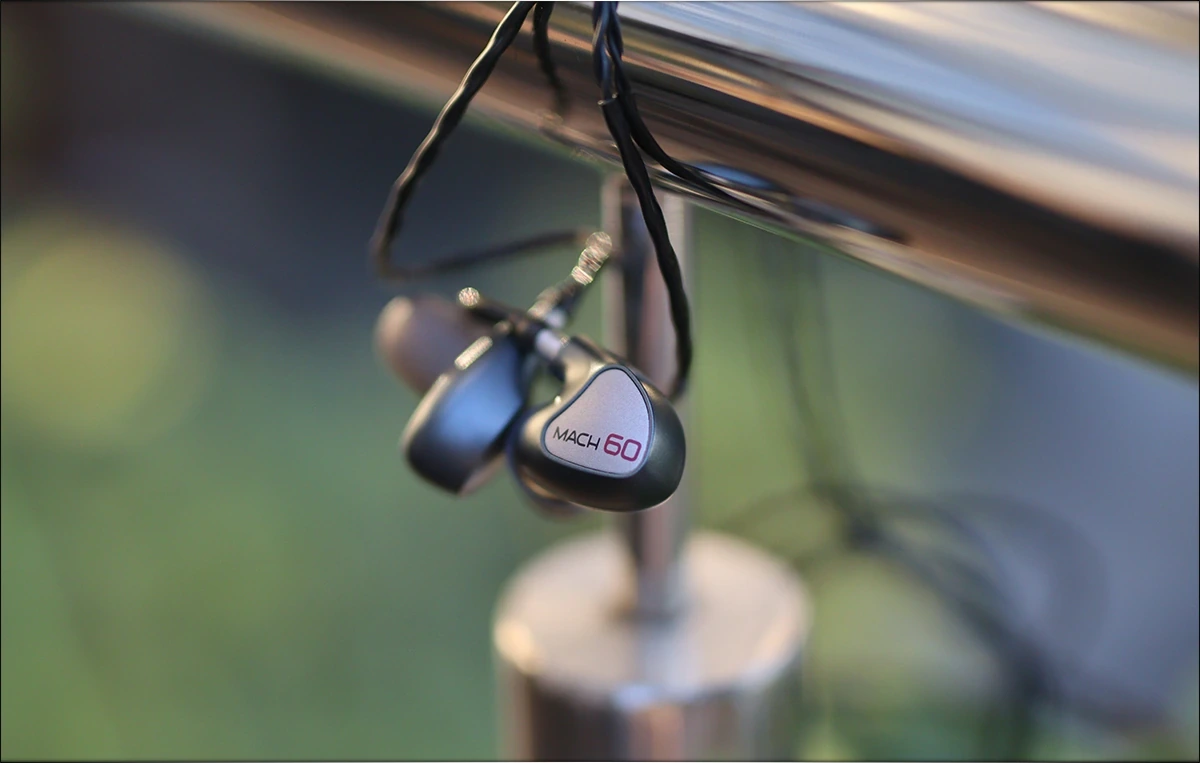
Westone MACH 60 vs Unique Melody MEXT (1100 USD vs 1200 USD) – We start heavy, and the package is surely interesting for both IEMs, and we see Unique Melody picking a very fashionable transport case, while Westone sticks with the professional and sturdy Peli case. Both IEMs have a super nice sound, but the fit is actually deeper and the tips are less sticky for Westone MACH 60. Both solutions work for me, both offer similar passive noise isolation. MACH 60 is harder to drive and needs more power, but it is also less sensitive to source noise. We have a very deep presentation for MEXT, which seems to have a better reach in the sub-bass, while Mach 60 is thicker in the upper bass and lower midrange, adding more weight to each musical instrument. The upper midrange is much brighter and stronger for MEXT, which has a more traditionally V-Shaped signature, while MACH 60 has a much smoother, more musical presentation in the upper midrange, which leads to less fatigue and a relaxing listening experience. The soundstage is wider for MEXT, but a bit deeper on MACH 60. Instrument separation is better on MACH 60. Technical edge and ability is similar, MACH 60 has a more natural midrange.
Westone MACH 60 vs Oriveti OV800 (1100 USD vs 999 USD) – We have a better package form Westone, although the smaller transport case of OV800 might be a better option for those who don’t want to lug around a large peli case with their IEMs. The Westone Audio comfort is better after you get the perfect tip size for your ears, and MACH 60 offers a higher degree of passive noise isolation than OV800. The sound is actually interesting on both, MACH 60 seems to have a better instrument separation and it is more precise, while OV800 has an airier presentation, with a crispier texture, they both have similar level of dynamics, and the tonality is similar. MACH 60 has a relatively smoother texture presentation, and it also has a higher amount of bass and thickness, while OV800 tends to have a faster sound with lower bass levels. I prefer MACH 60 for Rap, EDM and Pop, and would generally pick it over OV800 for other styles as well thanks to the fact it is smoother, and not quite as aggressive / fatiguing, although OV800 may present some details a bit more evidently. The harmonics are richer and there’s a more natural overtone on MACH 60, the stage being slightly wider on OV800, but deeper for MACH 60.
Westone MACH 60 vs Ambient Acoustics MAD16 (1100 USD vs 2500 USD) – We have a hard comparison here, as MAD16 is quite a bit pricier than MACH 60, but I found many similarities between the sonic presentations of the two. If we’re looking at the fit, MAD16 is slightly larger, has a different ergonomic, and a shallower fit, but both IEMS offer good passive noise isolation. The MAD16 default cable is thicker and less stealthy, while it is lighter for MACH60. We have a similar tonality between them, with a similar midrange presentation, a fuller bass and deeper bass plated by MAD 16, which also has a deeper overall sound and a slightly better resolution. An important aspect to keep in mind is that once you reach this price point, the diminishing returns effect kicks in harder the more you climb on the price ladder, and you’ll notice less improvement in resolution and detail going from MACH 60 to MAD16 than if going from a midrange IEM like FiiO FH7 to MACH 60. The soundstage has similar depth, but MAD16 has a higher width, harmonics are richer on MACH 60.
Westone MACH 60 vs Fir Audio VxV (1100 USD vs 999 USD) – The Westone package is certainly larger and more impressive at first, but the transport case of VxV is more practical, as they come with a smaller case. The overall comfort is better with deep-fitting IEMs like MACH 60 if you get to do enough tip rolling to find your best fit. VxV has a shallower fit and will be better for those who have a complex ear canal shape, especially if you have swimmer’s ear or don’t generally have good comfort with deep-fitting IEMs, but VxV has a lower passive noise isolation as a result of its shallower fit. The sound is similar in the midrange, where both have a similar natural tonality for the voices, but MACH 60 has a thicker bass and sub-bass, having better impact in the ultra lows. VxV tends to be snappier and have a higher attack, present textures and voices with a bit more detail, while MACH 60 is smoother up top too, having a relaxed and easy listening experience. If you’re into impact and want a higher level of attack, VxV provides that while being natural and clean, while MACH 60 has a more musical presentation, a softer and gentler sound, with less focus on impact and more focus on being accessible sonically for long hours of listening (or singing). The MACH 60 soundstage is deeper and wider, and it has a richer midrange presentation too.
Westone MACH 60 vs Campfire Ara (1100 USD vs 1300 USD) – Ara has a much more fashionable case and package, but the peli case of MACH 60 is no slouch either, being one of the best cases you can get for your IEMs. The overall comfort is similar and Ara has a semi-deep fit instead of a shallow fit, so they also offer outstanding passive noise isolation and low leakage, but MACH 60 goes one step further and if you need something for playing on a stage, MACH 60 would be a better fit. MACH 60 is harder to drive. Sonically, MACH 60 sounds considerably thicker, more relaxed and with a lower amount of treble, being easier to enjoy if you’re easily fatigued. Ara has a slightly better technical side, with better resolution, and it extracts a bit more detail from music. Ara is considerably more aggressive though, and you’re best picking the one that suits your listening pleasure more, Ara is technical, U-Shaped, brighter, has a higher attack, MACH 60 is thicker, smoother, has a more natural midrange and is considerably more relaxed, but has a similar soundstage and instrument separation. The sound is richer on MACH 60, as it has a more organic and harmonic presentation.
Value and Conclusion
I like reviewing products that have their price slashed by the time I review them, because you can argue they have a good price / performance ratio for sure. As MACH 60 was released at 1100 USD, I judged it for that price, and did the comparison part of today’s review with IEMs in that range, but with the price slashed at 824 at the moment I’m posting today’s review, you’d have a really hard time finding another flagship with this price point.
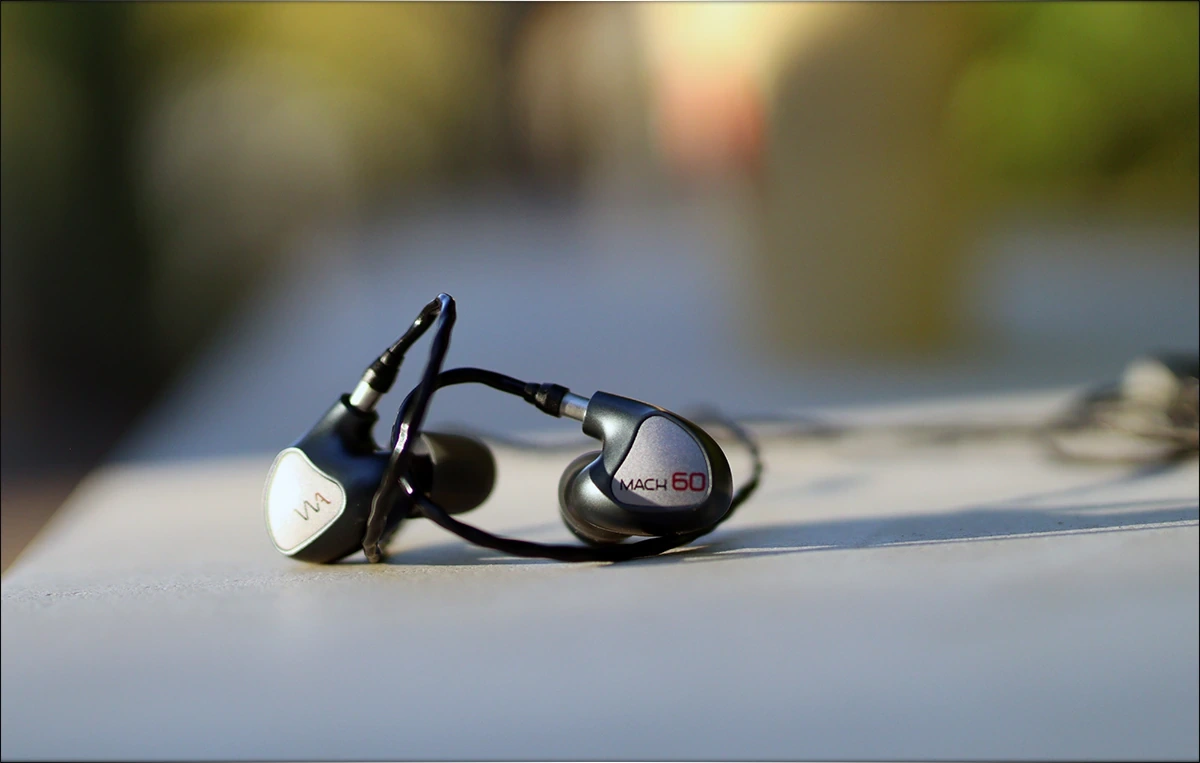
The westone experience is unique for sure, they always have a certain deep fit, high isolation level and good performance relative to the price, so it is time they appear in the Audiophile-Heaven Hall Of Fame, as MACH 60 totally earned a place here.
At the end of the day, if you’re looking for a universal IEM with superb comfort, isolation and low leakage, and a deep, full, thick and satisfying sound, tons of impact, and which can work well with your equipment, but also responds well to audiophile DAPs or Digital Audio Players, MACH 60 from Westone is one of the best you can go for at the price it’s currently selling at.
Product Link
You can grab one from www.amazon.com here: https://amzn.to/3TreBDA
If you’re in the UK, you can grab one from www.amazon.co.uk here: https://amzn.to/3TlCnkD
And if you’re from Europe, you can grab one from www.amazon.de here: https://amzn.to/3T348OV
--- Please remember to stay safe, and always have fun while listening to music!---
- If you have a dime to spare, please donate, and help us! It would make the day brighter for me and my wife-
Full Playlist used for this review
We listened to more songs than those named in this playlist, but those are excellent for identifying a sonic signature. I recommend trying most of the songs from this playlist, especially if you’re searching for new music! The playlists are different for Spotify, Tidal and Youtube, and based on the songs I enjoy and are available on each!
https://www.youtube.com/playlist?list=PL_cjBXGmwSHSdGcwuc_bKbBDGHL4QvYBu
https://open.spotify.com/playlist/5J3oloz8Riy9LxEGenOjQ0?si=979ba4f082414be7
https://tidal.com/browse/playlist/330fd544-8e5b-4839-bd35-676b2edbb3d5
--- Contact Us ---






[…] Plus, I have paired it with both IEMs and Full-Sized Headphones, and for the IEM list I have used Westone MACH 60, Tin HIFI P1 MAx II, Campfire Moon Rover, Simgot EM10, HarmonicDyne Devil, HeartField Blanc, and […]
[…] Campfire Audio Bonneville, Spirit Torino Twin Pulse beryllium, Soundz Flame, Soundz Avant, and Westone MACH 60. While I mostly used IEMS, R6 PRO II can power the Expanse to beautiful sonic levels, with […]
Thanks for sharing.
Always really happy to help!